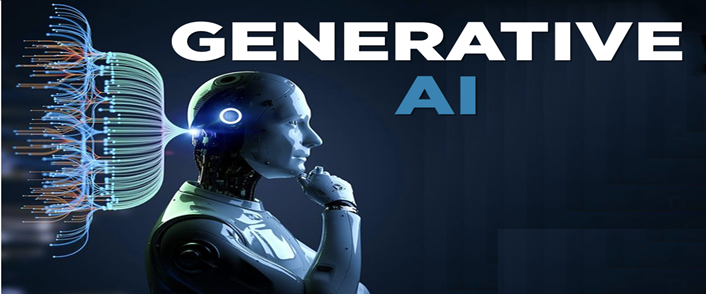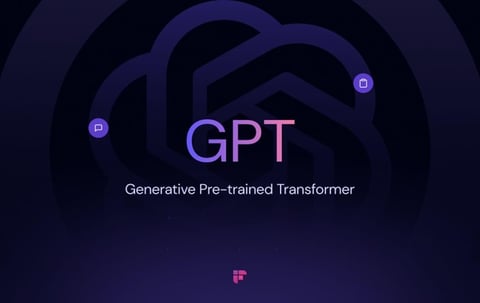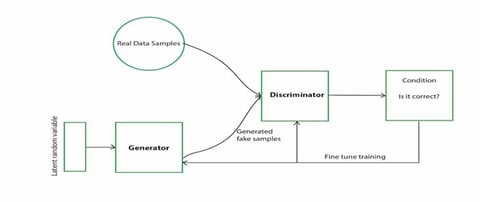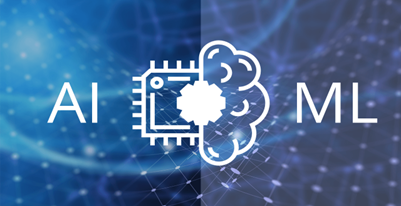Generative AI : Redefining Digital Creativity
Part 1
TECHNOLOGY
Arjun Prabhakar
10/19/20245 min read


Generative AI stands at the forefront of a transformative era, reshaping our interaction with data and redefining the boundaries of creativity across diverse sectors. This innovative tool utilizes sophisticated statistical techniques to generate content across text, images, and code, empowering individuals and industries with remarkable capabilities. Examples of these models are generative adversarial networks, or GANs, and transformer models. With these models, generative AI can create outputs that closely mimic human-made content.
Firstly, there's text generation, where generative AI models like Generative Pre-trained Transformer, or GPT, can compose essays, generate creative writing, automate customer support, and more. Next, there's image creation. Generative AI can transform textual descriptions into stunning visual representations. Generative AI produces captivating audio-visual content for advertising campaigns, captivating audiences, and enhancing brand visibility. In addition to its applications in creative fields, generative AI also showcases its capability in code generation which helps programmers by suggesting improvements, completing lines of code, or even creating entire programs. Finally, there is data synthesis. It utilizes extensive datasets and responsibly generates synthetic datasets that maintain statistical properties without compromising individual privacy. This application is crucial for training more AI models where access to real data might be restricted or unethical.




Generative AI represents a dynamic and rapidly evolving sector within artificial intelligence, concentrating on the development of algorithms capable of producing novel content, including text, images, audio, or video, derived from existing data. A comprehensive understanding of the terminology in this field elucidates the functioning of these technologies and highlights their implications across various industries.
Artificial intelligence (AI) pertains to the domain of computing dedicated to creating systems that can perform tasks typically requiring human intelligence. These tasks encompass reasoning, learning, problem-solving, perception, language comprehension, and the ability to move and manipulate objects. AI technologies utilize algorithms and dynamic computing environments to enable machines to address complex problems, adapt to new situations, and learn from prior experiences. The brain of AI is machine learning (ML), wherein algorithms identify patterns and infer probabilities from data, facilitating the machine's performance enhancement over time. AI systems can vary from simple, rule-based algorithms to intricate neural networks modelled after the human brain.


Machine learning (ML) is a vital area within artificial intelligence that emphasizes the creation of algorithms and statistical models that empower computers to execute specific tasks without explicit instructions. Instead, these systems learn and make predictions or decisions based on data. A more technical breakdown includes:
Types of learning:
Supervised learning: Algorithms learn from labelled training data, aiming to predict outcomes for new inputs.
Unsupervised learning: Algorithms identify patterns in data without requiring labelled responses, often utilized for clustering and association.
Reinforcement learning: Models learn to make sequences of decisions by receiving feedback on the effectiveness of their actions.
Algorithms and techniques: Common algorithms encompass linear regression, decision trees, and neural networks. Advanced techniques involve deep learning, which employs layered neural networks to analyse various levels of data features.
Data handling and processing: Effective machine learning necessitates robust data preprocessing, including normalization, addressing missing values, and feature selection to enhance model accuracy.
Performance evaluation: ML models are assessed based on metrics such as accuracy, precision, recall, and the area under the receiver operating characteristic (ROC) curve, ensuring their efficacy on unseen data.
Application areas: ML finds applications in diverse fields such as finance for algorithmic trading, healthcare for predictive diagnostics, and autonomous vehicles for navigation systems.


Deep learning (DL) constitutes an advanced branch of ML that employs artificial neural networks with multiple layers, referred to as deep neural networks. These networks possess the capability to learn from substantial amounts of unstructured data. DL models automatically extract and learn features at multiple levels of abstraction, enabling the system to discern complex patterns within large datasets. The learning process can be:
Supervised - where the model is trained with labelled data
Semi-supervised - which utilizes a combination of labeled and unlabelled data
Unsupervised - which relies solely on unlabelled data
This technique proves particularly effective in domains such as image recognition, natural language processing (NLP), and speech recognition, where traditional machine-learning techniques may be inadequate due to the complexity of data structures. DL has facilitated advancements in generative AI, allowing for the creation of sophisticated models like generative adversarial networks (GANs) that can generate new data instances that closely resemble real data.
Neural networks (NN) serve as a fundamental component of AI. They excel in pattern recognition and data interpretation tasks, achieved through a structure inspired by the human brain. Comprising layers of interconnected nodes, or neurons, each with its weights and biases, NN processes input data through these nodes. The connections between nodes symbolize synapses and are weighted according to their significance. As data traverses each layer, the network adjusts the weights, which is the mechanism through which learning occurs. This structure enables neural networks to learn from extensive datasets to make decisions, classify data, or predict outcomes with high accuracy. NN is particularly essential in fields such as computer vision, speech recognition, and NLP, where they can identify complex patterns and nuances more effectively than traditional algorithms. The training process involves techniques such as backpropagation, wherein the model learns to minimize errors by adjusting weights to yield the most accurate outputs possible.
The deployment of generative AI across various industries indicates a major shift in operational dynamics. In healthcare, AI-generated models can predict patient outcomes, and personalized treatment plans, and automate administrative tasks. In finance, AI can manage risk assessment, automate trading, and personalized banking services. The creative industry is seeing an explosion of innovation and inspiration as generative AI-aided tools are contributing hugely to the fields of art, music, and literature, pushing the boundaries of traditional creativity. As AI evolves, its impact on the workforce and industry standards will be significant. The demand for AI knowledge is growing, and learning to work with AI will be crucial for career advancement in all fields. Jobs that traditionally didn't involve technology will start using AI tools more often. This shift will require professionals in most fields to develop new skills and undergo additional training to effectively integrate generative AI into their work. As a result, educational programs and workshops focusing on generative AI and its applications are becoming increasingly important, offering valuable resources for those looking to stay relevant and excel in their careers. Both businesses and individuals need to understand and adapt to generative AI's capabilities to fully harness its potential. Generative AI is not just a tool for creating and automating, it is a catalyst for innovation and transformation across all areas. Welcome to the age of generative AI, where everyone has the chance to redefine the boundaries of what is possible.
